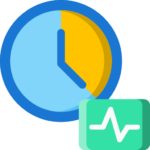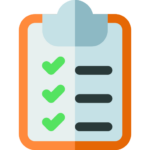Assessing early literacy skills is an essential part of ensuring that all young learners develop the foundational skills needed for reading success.
A wide range of assessments are available to school leaders and educators, each serving specific purposes in identifying, monitoring and supporting a child’s literacy development.
In this article, Sprig Learning explores the various types of early literacy assessments and provides guidance on choosing the right assessment tool based on your specific needs.
The format consists of a series of 11 questions, as asking questions is integral at any phase of gathering information when deciding what is the right early literacy assessment for your school and students at this time.
1. What Is The Purpose of The Early Literacy Assessment?

There are various types of assessments in early literacy, each with their own purpose. It is important to understand the early literacy assessment landscape when choosing the best tool for your school and students.
The primary types of early literacy assessments are listed below, with their respective purposes and examples mentioned.
Types of Early Literacy Assessments
Screeners
Purpose: To quickly identify students at risk of reading difficulties early in the school year. Includes standardized tests and brief assessments of key literacy skills.
Examples: DIBELS, AIMSWeb, FastBridge.
Diagnostic Assessments
Purpose: To identify specific areas of literacy that require intervention. Includes running records of in-depth assessments targeting a comprehensive reading skill inventory such as phonics, fluency, vocabulary, and comprehension skills.
Examples: Acadiece, Sprig Reading, i-Ready.
Progress Monitoring Assessments
Purpose: To track a student’s growth over time and evaluate the effectiveness of early interventions. Often includes regular and ongoing assessments throughout the school year to measure progress and adjust instruction accordingly.
Examples: Sprig Reading, CORE Phonics Survey, CKLA.
Formative Assessments
Purpose: To inform instruction by providing real-time feedback on student learning. Often includes teacher observations, classroom quizzes and anecdotal records.
Examples: GOLD, Sprig Reading, Core5.
Summative Assessments
Purpose: To evaluate a student’s overall literacy performance at a specific point in time. Includes state standardized tests and end-of-year reading assessments.
Examples: Ontario’s EQAO, Texas’ STAAR, North Carolina’s BOG3.
Choosing the Right Assessment Based on Purpose
Selecting the appropriate assessment tool depends on the specific needs of the school and/or school district.
If the goal is to quickly identify students at risk, screeners are the assessment of choice.
For a more in-depth understanding of a student’s literacy profile, diagnostic assessments provide valuable insights.
When it comes to tracking literacy growth over time and evaluating the effectiveness of interventions, progress monitoring assessments are essential.
For real-time feedback on student learning and instructional planning, formative assessments are very handy. They are very similar to progress monitoring assessments, and can also include diagnostic assessments as a part of its wider definition.
Lastly, if the aim is to evaluate a student’s overall literacy performance at a specific point in time, summative assessments come into play.
In practice, many schools and school districts employ a combination of these assessment types, creating a comprehensive and well-rounded approach to address various objectives.
The key is to align the choice of assessments with the specific goals and requirements of the educational context, allowing for a tailored and effective approach to enhancing early literacy outcomes.
2. How Often Should Assessments Occur?

It’s important to decide how frequently assessments need to be conducted in your classrooms.
For ongoing monitoring of student learning, diagnostic assessments and progress monitoring assessments are ideal.
For periodic evaluations, screeners and summative assessments are better suited.
3. What Resources Will Be Required to Deploy the Assessments?

Assess the available resources, including time and personnel, for administering any assessment.
Some assessments, like formative assessments conducted by teachers, require minimal resources, while others, such as summative state standardized tests, can involve significant logistical planning and training.
But even within each assessment type, there are variations in the utilization of resources.
For example, both diagnostic assessments and progress monitoring assessments can be considered a part of formative assessments.
But the diagnostic assessments typically require more intensive teacher involvement. Teachers administer these assessments, analyze the results, and use them to develop individualized intervention plans.
Progress monitoring tools are generally less time-consuming for teachers. They involve regular, brief assessments conducted at intervals, for eg. weekly or monthly, to gauge a student’s progress. They often include digital tools and technology that support the ongoing tracking of outcomes.
Regardless of the degree of teacher involvement and resources needed, it helps to have documentation and support available that guides teachers on how to implement an assessment tool effectively.
Professional development measures are required to be put in place that provide the relevant training and support for teachers on how to assess students consistently and effectively.
4. How Individualized Should Assessments Be?

Consider the unique learning strengths, gifts and needs of each student.
Formative assessments allow for individualized analysis through running records and note taking. In both diagnostic assessments and progress monitoring assessments, many details of each student can be recorded.
For summative assessments like standardized tests, achieving such a detailed understanding is not feasible.
However, these assessments serve the valuable purpose of evaluating both individual and group-level learning outcomes, which is a distinct advantage.
5. What is the Relationship Between the Assessment and Curriculum?

Ensure that the assessment you choose aligns with the curriculum and literacy goals you have. Assessments should reflect what students are expected to learn and achieve.
If the assessment focuses on one major learning outcome such as a reading level or reading proficiency, it’s a summative assessment.
If it aims to gauge students’ pre-existing knowledge to determine their readiness and understanding of the curriculum’s concepts, it’s a screener.
If the assessment covers multiple skill sets essential for achieving a major goal in an evidence-based curriculum, it’s a diagnostic assessment.
If it focuses on measuring finer details, like a subskill within a skill set, over time, it leans toward being a progress monitoring assessment.
6. What Type of Students Are The Assessments For?

Questioning who the assessments are for addresses accessibility.
Evaluate the accessibility of the assessment tool, including whether it’s suitable for students with diverse learning needs and backgrounds.
Ensuring assessment validity and proven to mitigate bias is critical, given the increased diversity in classrooms today, both in terms of learning skills and background.
Bias is one of the featured terms that are essential to know in the cause for early literacy equity.
There is implicit and explicit bias, and assessments must be both inclusive and culturally responsive to tackle such biases head on.
7. Who Will Be Doing The Assessment?

There can be multiple roles involved in assessment beyond just teachers. Sometimes there is collaboration between teachers and other specialist roles in the assessment process.
For example, reading specialists often assess students’s reading abilities and develop intervention plans. They work closely with classroom teachers to support student progress.
Speech language pathologists assess oral language skills and phonological awareness.
8. Are Assessments Easy to Administer?

The rigidity or lack of flexibility when it comes to the administration of assessments may pose a hindrance to some early literacy school teams. But some assessments are more intuitive and easy to use than others.
However, it’s important not to mistake an evidence-based teaching framework for lack of flexibility. Teachers must still customize instruction for diverse student needs, hence there will always be scope for flexibility.
Formative assessments play a crucial role in enabling such personalized instruction, allowing regular tracking of student understanding of foundational reading skills to inform instruction.
Teachers will always maintain autonomy with assessments, because while it’s imperative to follow the evidence and teach all the foundational literacy skill sets to every student, assessments will determine if 1) students are ready to learn 2) if they are learning new concepts 3) if they are retaining the knowledge required to advance.
Given their pivotal role and the demands for classroom teachers, it’s important that assessments are easy to administer.
9. When Should the Assessments Occur?

Timing (During the Academic Journey)
Assessments should be introduced as early as possible in a child’s life, because prioritization of early childhood education is critical. It is a powerful driver of literacy equity and there are strong ties between high-quality Pre-K education and primary education student performance.
The case for early literacy intervention is undeniable, and it is only made possible by use of early assessments, preferably starting at preschool, and not any later than Grade 3.
Timing (During the School Day)
A teacher can assess students at any time of the day depending on their daily schedule.
Here are some contexts in which assessment may occur:
Morning Routine
Some teachers incorporate brief literacy assessments as part of their morning routine.
This can involve short activities like sight word recognition, letter naming, or phonemic awareness exercises to gauge students’ readiness for the day’s lessons.
Small Group Instruction
During small group literacy instruction, teachers may assess students individually or in small groups.
This allows for more targeted assessment and immediate feedback, particularly for skills like reading comprehension, fluency, or phonics.
Literacy Centers
Many classrooms have literacy centers where students rotate through different small-group literacy activities.
Teachers can use this time to assess specific skills related to the center’s focus, such as vocabulary development, phonics, or reading comprehension.
One-on-One Assessment
Some assessments, especially diagnostic assessments or more in-depth evaluations, may require one-on-one sessions between the teacher and the student.
These assessments may occur at various times during the day, depending on the teacher’s schedule.
End of Lesson
Teachers often use the end of a literacy lesson to assess students’ understanding and progress related to the lesson’s objectives. This can involve quick checks for understanding of the taught concepts.
Scheduled Assessment Periods
In some cases, teachers may have dedicated assessment periods built into the weekly schedule.
These periods can be used for more formal assessments, progress monitoring, or data collection.
10. Should the Assessments Have One or More Features?

Assessments could have other features that either add value to the assessment or complement it.
Small group instruction is one of the featured trends in a list of evidence based early literacy trends. Many schools have adopted high-dosage and high-impact tutoring in small groups. But with such efforts, ongoing diagnostic assessments are key.
Assessment is needed on the journey from emergent literacy to reading mastery. In laying and building on a strong reading foundation, there is a need for individualized instruction which can only be administered on the basis of ongoing assessments that monitor progress.
So then, it would make sense for assessment tools to have other features as well, such as differentiated instruction capabilities.
Also, to enhance reading instruction in the classroom, it’s recommended to make assessments fun and engaging. Thus, assessments could have recommendations as a feature, which suggest how to best incorporate it into play-based learning.
There could be more of such value-adds and complements. The school’s early literacy team could consider assessment tools with multiple features to align with the diverse objectives of the early literacy team.
11. How Many Assessments Are Needed?

It can be beneficial to rely on more than one source of assessments. Especially, if there are multiple assessment goals the school or school division has.
Rather than one tool with multiple features, the school can consider multiple assessment tools each specializing in one thing.
For example, specifically designing strategies for struggling students is a recommendation for improving reading instruction in schools. A school may have a large body of students who need extra support.
These numbers will skew reading performance, and so it’s important to know this information. Thus in this case, addressing the root issue with an assessment such as a screener is important.
For improving early literacy achievement, stories of using multiple types of assessments are trending, where there are screeners, diagnostics, progress monitors, and standardized assessments.
For example, the Upper Grand District School Board Director of Education, Peter Sovran, assures that besides the EQAO assessments data, the district also has report card data and teacher assessments data to understand student progress.
Select The Right Assessment(s) For Your School

Early literacy assessments play a crucial role in helping educators support young learners on their journey to becoming proficient readers.
By understanding the various types of assessments and their purposes, school leaders, administrators and educators can make informed decisions about which tools to use.
Whether it’s identifying at-risk students, tailoring interventions, monitoring progress, or evaluating overall literacy performance, there’s an assessment method suited to every need.
Implementing ongoing progress monitoring was featured as a major takeaway in a prior article featuring some brilliant case studies on improving student achievement. It’s important that a school’s early literacy team is on board with the decision of what assessment to use.
In that particular case, Chicago public schools administrators and educators set grade level teams to set growth targets in reading, math and attendance and would regularly meet in both grade-level and vertical-planning teams.
Ultimately, the key to effective literacy assessment lies in using the right tool at the right time for the right purpose. Sprig hopes to guide you toward selecting the appropriate assessment through the questions presented in this article.

